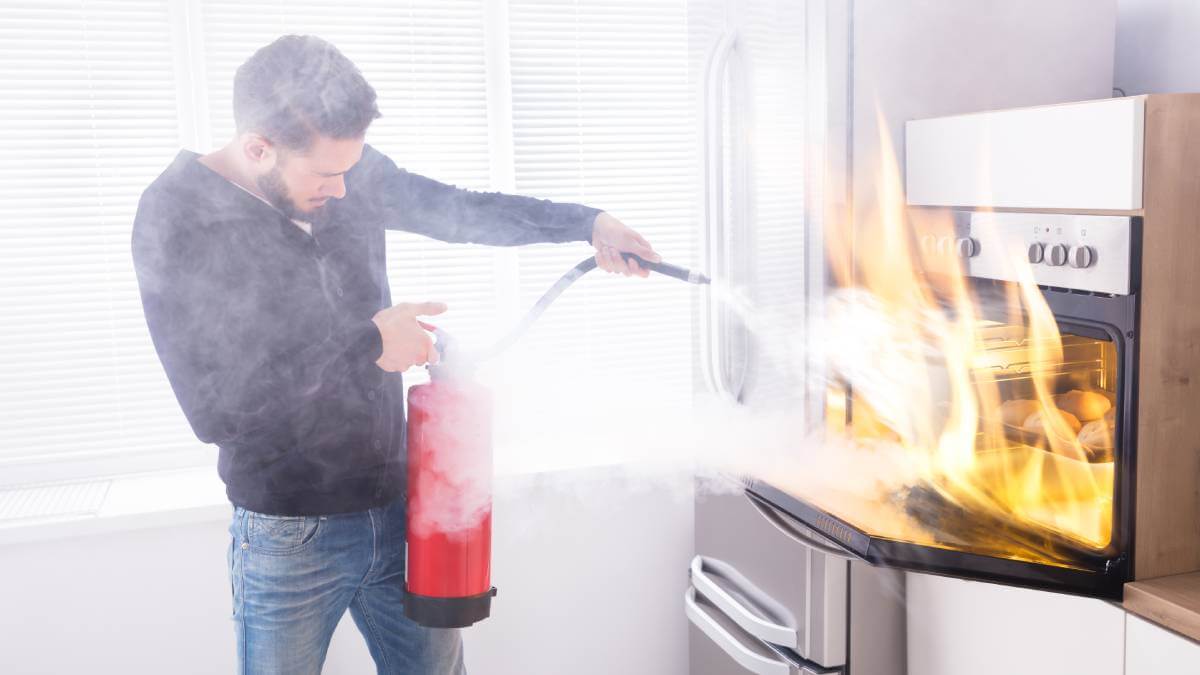In the realm of home safety, the kitchen stands as both the heart of the household and a potential hotbed for disaster. According to fire safety experts, the majority of house fires start in the kitchen. Here are some common causes of house fires, and how to help prevent one in your home.
Research conducted by Fire Rescue Victoria (FRV) and the Country Fire Association (CFA) revealed that around 900 kitchen fires occurred in the state alone in 2022. Unattended cooking is one of the most common causes of preventable house fires. Whether it’s a sizzling pot on the stove or a casserole baking in the oven, leaving the kitchen while cooking can result in disaster. Even a brief distraction can result in an out-of-control fire.
Kitchen fires can cause serious damage to your home as well as injury. Over the past 10 years, the CFA reports that 15 per cent of fire-related fatalities and serious injuries have occurred from kitchen fires.
Common causes of kitchen fires
While the primary cause of kitchen fires is intentionally left on or unattended cooking, fires can start in other ways too. Frayed wiring, overloaded power points and faulty appliances such as ovens, stovetops and toasters are all potential culprits of kitchen fires.
Eight ways to help reduce the risk of a kitchen fire
Stay present
Never leave the kitchen unattended while cooking. If you need to step away, turn off the stove or oven.
Don’t step away from boiling pots or hot pans. A pot can easily over boil, or food can stick to a pan and ignite if not monitored closely. Despite the seemingly never-ending home tasks, maintaining awareness of your kitchen surroundings is crucial to minimising the risk of fire. Fire Rescue commissioner Gavin Freeman advises staying close to the stove to enhance safety and reduce the likelihood of accidents.
Supervise children and pets
Curious children and mischievous pets can inadvertently cause kitchen fires by knocking over hot items or playing with appliances. It’s crucial to establish clear boundaries in the kitchen, especially during cooking times.
Encouraging kids to learn about cooking is wonderful, but it’s essential to maintain constant supervision. Research from Monash University indicates that more than 50 per cent of children treated in emergency departments during 2021-22 sustained injuries at home.
Be extra careful while frying
One of the most common fire hazards in the kitchen is the use of cooking oils and grease. When heated beyond their smoke points, these substances can catch fire quickly. Splattering oil can also pose a risk, especially if it comes into contact with an open flame.
Clean it up
Regularly clean your stovetop, oven, grill and range hood to prevent oil, dust and grease from building up and potentially fuelling a fire
Remove hazards
Eliminate risks by keeping flammable items and materials at a safe distance from heat sources. For instance, avoid placing tea towels or kitchen paper near the stove, and don’t position your toaster beneath curtains.
Additionally, ensure that pot and pan handles are turned away from you to help prevent fires and injuries. Handles facing outward can be easily bumped or knocked over, posing potential hazards.
Maintain kitchen appliances
Fires can be prevented by keeping appliances such as air fryers and microwaves clean and in good working order. Regularly inspect and maintain kitchen appliances, check the cords for damage and replace them if worn.
Regularly cleaning out your toaster for crumbs can also help prevent fires.
Check your smoke alarms
Ensure that your kitchen is equipped with a working smoke alarm. Regularly test and replace batteries as needed.
The CFA recommends installing smoke alarms powered by a 10-year-long life battery in all sleeping and living areas of their home. They also recommend connecting these smoke alarms so that if one is triggered, all of them will alert you.
Be prepared
Even the safest kitchens are not immune to fires, so it’s important to be prepared. The CFA advises having a fire blanket and fire extinguisher on hand in case of an emergency. Store these items in a location that is easily accessible but not directly within the immediate cooking area.
“If a fire does start in the kitchen, turn off the stove if it’s safe to do so,” Commissioner Freeman says. “Use a fire extinguisher or fire blanket if you are confident in their use, evacuate everyone from the home, close the kitchen door and call triple zero.”
How often do you test your smoke alarms? Do you have a fire extinguisher and fire blanket in your kitchen? Let us know in the comments section below.
Also read: Lithium battery fires are on the rise. Here’s what you need to know

